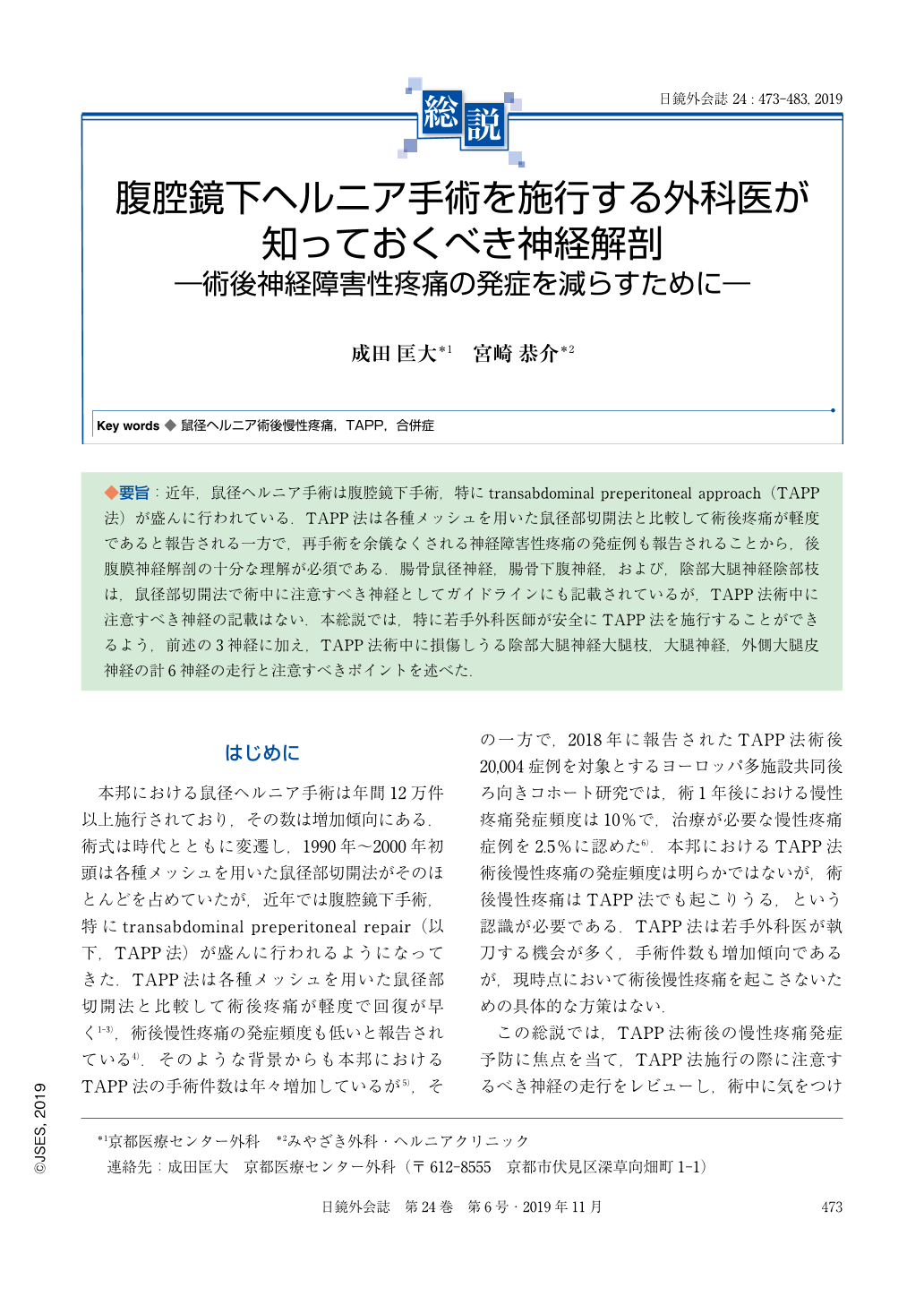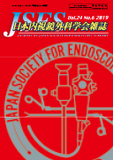Japanese
English
- 有料閲覧
- Abstract 文献概要
- 1ページ目 Look Inside
- 参考文献 Reference
◆要旨:近年,鼠径ヘルニア手術は腹腔鏡下手術,特にtransabdominal preperitoneal approach(TAPP法)が盛んに行われている.TAPP法は各種メッシュを用いた鼠径部切開法と比較して術後疼痛が軽度であると報告される一方で,再手術を余儀なくされる神経障害性疼痛の発症例も報告されることから,後腹膜神経解剖の十分な理解が必須である.腸骨鼠径神経,腸骨下腹神経,および,陰部大腿神経陰部枝は,鼠径部切開法で術中に注意すべき神経としてガイドラインにも記載されているが,TAPP法術中に注意すべき神経の記載はない.本総説では,特に若手外科医師が安全にTAPP法を施行することができるよう,前述の3神経に加え,TAPP法術中に損傷しうる陰部大腿神経大腿枝,大腿神経,外側大腿皮神経の計6神経の走行と注意すべきポイントを述べた.
Recently, increasing number of patients undergo transabdominal preperitoneal approach (TAPP) for inguinal hernia repair in Japan. Although TAPP is reported to have advantages in early postoperative pain compared to anterior repair with mesh, it has been also reported that severe postoperative neuropathic pain sometimes occurs in patients undergoing TAPP. Therefore, awareness and recognition of retroperitoneal neuroanatomy is mandatory to perform TAPP safely. Japanese guidelines for treatment of inguinal hernia describe management of ilioinguinal, iliohypogastric, genital branch of genitofemoral nerves in patients undergoing anterior repair to prevent postoperative chronic pain, while there is no description of nerve management during TAPP. This review article summaries the anatomy of additional three nerves including femoral branch of genitofemoral, femoral, and lateral femoral cutaneous nerves, which are vulnerable to injury during TAPP and discusses pitfalls in this procedure. The aim of this review is to increase the surgeon's awareness and knowledge, particularly for young surgeons, about retroperitoneal neuroanatomy in order to perform TAPP safely.

Copyright © 2019, JAPAN SOCIETY FOR ENDOSCOPIC SURGERY All rights reserved.


